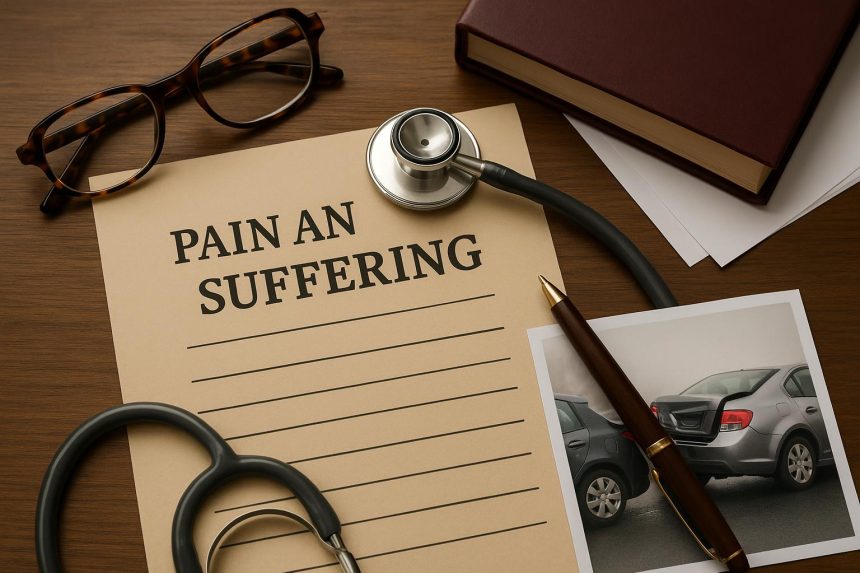Car accidents in Los Angeles are unfortunately common, with the California Highway Patrol reporting thousands of traffic collisions annually in the county. According to recent data, Los Angeles experiences some of the highest rates of vehicle accidents in California, often resulting in significant physical and emotional trauma for victims. Vehicle accidents are traumatic, and people who have been in one typically continue to have issues for a long time after the physical injuries have healed.
The most important element involves the physical and psychological damage suffered, also known as pain and suffering. When you’ve been injured in such an incident, consulting with a Los Angeles car accident lawyer can be crucial in understanding your rights and pursuing fair compensation. Knowing how to show these effects is essential to pursuing compensation. Today, we will be discussing how to successfully demonstrate pain and suffering following an accident.
Understanding Pain and Suffering
This refers to both physical pain and psychological distress. This can include injuries such as physical pain or emotional suffering, such as anxiety, depression, or trauma. These are subjective and difficult to measure, but they are very important when assessing personal injury claims.
Documenting Physical Pain
Medical documentation is essential. A healthcare professional who treats you after an accident also creates a record of your injuries. Comprehensive medical reports help establish a strong case by providing accurate medical findings, including diagnoses and treatment plans. Regular follow-up visits for persistent discomfort can further establish evidence.
Demonstrating Emotional Suffering
More detailed evidence is often needed for emotional and mental distress. Psychological evaluations done by professionals such as therapists or psychologists can help establish the mental impact. These evaluations offer professional opinions on anxiety, stress, or post-traumatic stress disorder due to the crash.
Using Photographic Evidence
Visual evidence can be compelling. According to the National Highway Traffic Safety Administration, proper documentation of injuries and accident scenes is crucial for establishing the severity of incidents. These images capture the damage to the body—these are injuries right after and through recovery. Photos of vehicles or the accident scene may better illustrate the seriousness of the accident. Photographic proof of injury confirms the argument of physical strain and emotional distress.
Gathering Witness Statements
Witnesses can provide an objective perspective of the crash and the events that followed. Their notes may cover visible injuries or emotional distress from the incident. Witness statements from those present at the scene or those who witnessed changes in behavior provide strong evidence. Such testimony offers third-party validation, giving credibility to claims of pain and suffering.
Exploring Legal Assistance
It can be helpful to consult with a lawyer on the complexities of a personal injury case. A lawyer with experience in such cases will help navigate the process. They can also make sure that all relevant documentation is collected and presented effectively. Attorneys also help in negotiating with insurance companies to receive fair compensation for pain and suffering.
Calculating Compensation
Many factors come into play in deciding what is a fair amount of compensation. This takes into account how serious injuries are, how long it takes to recover, and how much normal life is affected. Lawyers sometimes use approaches such as the multiplier method or the per diem method to determine fair compensation. Both tangible and intangible losses are considered during these calculations.
Importance of Timeliness
Immediate action in a personal injury claim is essential. Statutes of limitations vary based on location but set a specific period by which a claim must be brought forward. These steps allow for prompt medical attention, documentation, and legal consultation so that all evidence is preserved. The sooner you act, the better chance you will have at preserving the integrity of the claim and having a successful outcome.
Conclusion
There is more than one way to prove pain and suffering after a car accident. When incorporating medical records, personal documentation, and expert reviews, victims can develop a solid case. Visual evidence and witness statements are also very valuable tools. Hiring a legal expert ensures these pieces of evidence are presented effectively, thereby improving the chances of getting the appropriate compensation. To properly seek justice and recover from the aftermath of an accident, you need to be proactive and thorough when gathering evidence and presenting it appropriately.
Lynn Martelli is an editor at Readability. She received her MFA in Creative Writing from Antioch University and has worked as an editor for over 10 years. Lynn has edited a wide variety of books, including fiction, non-fiction, memoirs, and more. In her free time, Lynn enjoys reading, writing, and spending time with her family and friends.















